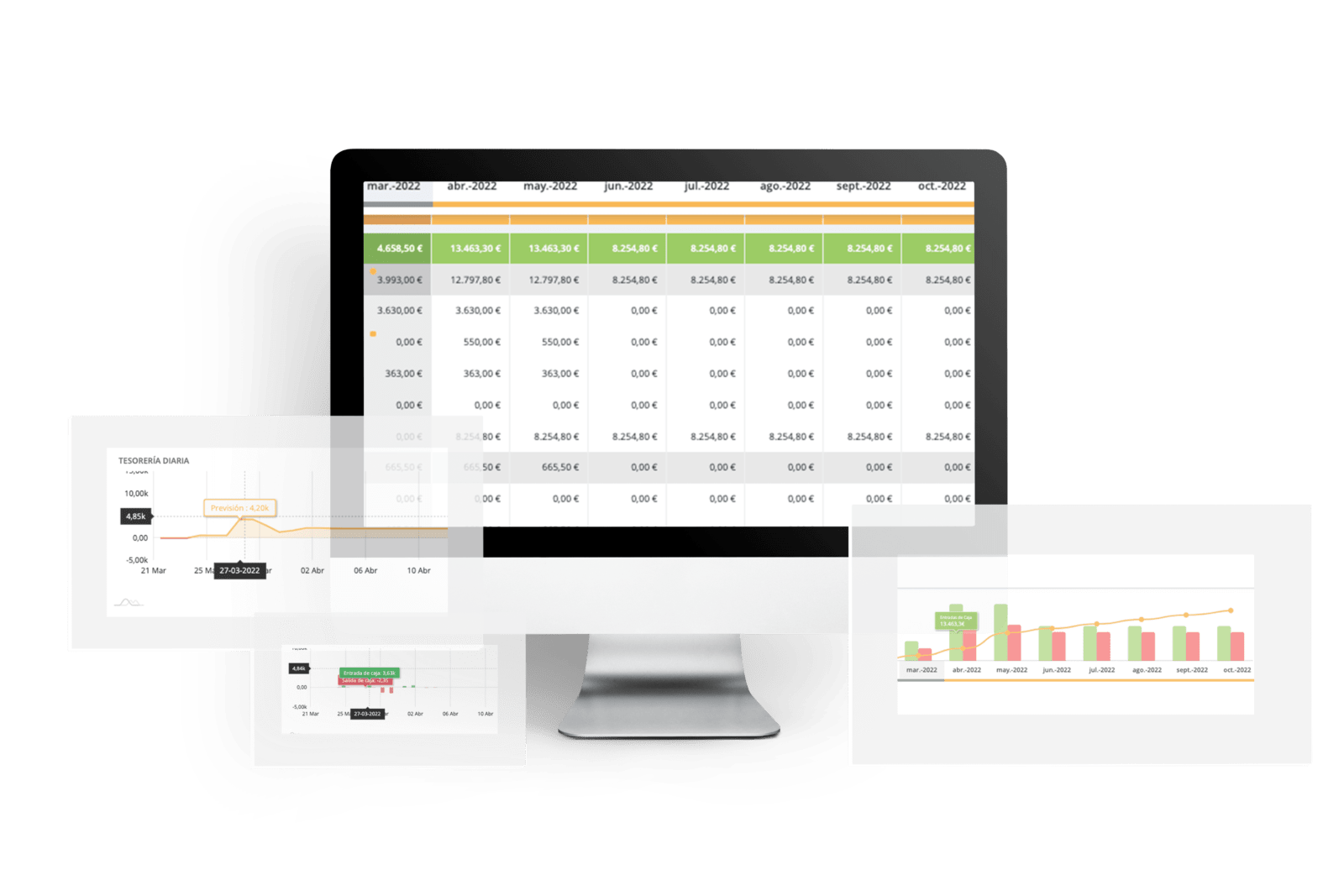First of all, how are you doing with your business forecasts? Do you know how to optimize your business expenses?
Here are the 8 steps in which we have condensed the most important actions to know how to optimize your business expenses. But before making any decisions affecting these expenses we would like to ask you to answer 3 questions:
- Are you clear about what can happen in your business?
- Do you have a clear view of your company’s collections and payments?
- Do you have a cash flow forecast for the coming months?
If the answer is yes, go ahead, you should already have a clear idea of the current state of your cash flow and therefore it is clear that you need to optimize your business expenses. But if the answer is no, we strongly recommend that you make a cash flow forecast, as this will undoubtedly be a key tool to visualize the needs and characteristics of your company’s cash flow. It is vital to have this step completed before making any decisions so that decisions can be based on data, not assumptions or ideas.
8 steps on how to optimize your business expenses
1. Differentiate between necessary expenses and expendable expenses: It is worth making an effort by performing this analysis to identify all expendable expenses and try to reduce them to obtain an immediate increase in months of life for your business. To identify candidate expenses to be reduced, it will help to think about which ones are not urgent or which ones provide a reduced benefit.
2. Delay your payments: Pick up the phone and talk to your “accessible” suppliers to try to get them to agree to a delay in the payment of the next due invoice.
3. Reduce your personal expenses and your salary: Payrolls are usually a major expense item, and being the first to reduce your salary in your company sets an example to the rest of the employees.
4. Don’t buy: Rent instead of buying. Even if the financial cost is higher, it is better to pay a higher amount prorated over several months than not being able to keep the company afloat for another 6 months. Today it is possible to lease almost any type of asset.
5. Renegotiate terms with your suppliers: Try to renegotiate payment periods with your suppliers. You have several cards to play, from increasing the contractual period to modifying certain economic conditions for the benefit of a longer payment period. Getting 30 days more average payment period on a supplier… that’s pure oxygen for your company!
6. Salary adjustments: As a last option, since companies exist thanks to the people who form them. If you have set an example by being the first to take a pay cut, it will be easier for you to make tough decisions about the rest of the workforce.
7. Adjust new investments: By all means, think twice, three and four times whether you really need to make that investment, as this is sure to further strain your future treasury.
8. Defer payment of VAT: The great protagonist of numerous surprises throughout the year in many businesses. Stop paying VAT quarterly and transform it into a predictable monthly payment, and of course with the advantage of paying it in several installments. Once you have done this, remember each month to calculate the VAT you will have to pay in the coming months, and don’t hesitate to call your accountant if you need help with the calculation.
Once you have considered (and performed, if applicable) all of the above, update the data in your cash flow forecast to be clear about how many payments you will have in the coming months, and therefore, the minimum sales you must have month by month to keep the business afloat.
Having this information will allow you to create very tangible objectives and align the rest of the employees to incentivize them to achieve them, thus allowing the business to survive the coming months.





